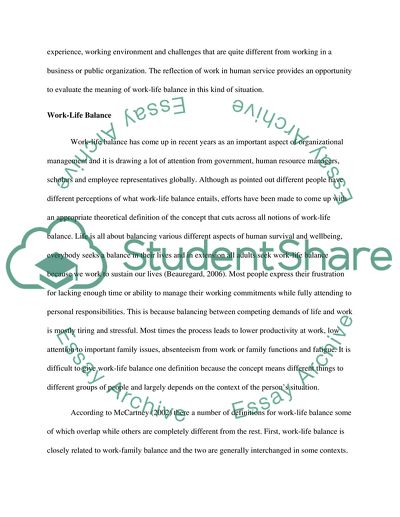Cite this document
(Work-Life Balance in the Context of Human Service Organizations Coursework, n.d.)
Work-Life Balance in the Context of Human Service Organizations Coursework. Retrieved from https://studentshare.org/social-science/1814901-critically-evaluate-the-notion-of-work-life-balance-in-relation-to-the-demands-of-practice-in-human-service-organizations
Work-Life Balance in the Context of Human Service Organizations Coursework. Retrieved from https://studentshare.org/social-science/1814901-critically-evaluate-the-notion-of-work-life-balance-in-relation-to-the-demands-of-practice-in-human-service-organizations
(Work-Life Balance in the Context of Human Service Organizations Coursework)
Work-Life Balance in the Context of Human Service Organizations Coursework. https://studentshare.org/social-science/1814901-critically-evaluate-the-notion-of-work-life-balance-in-relation-to-the-demands-of-practice-in-human-service-organizations.
Work-Life Balance in the Context of Human Service Organizations Coursework. https://studentshare.org/social-science/1814901-critically-evaluate-the-notion-of-work-life-balance-in-relation-to-the-demands-of-practice-in-human-service-organizations.
“Work-Life Balance in the Context of Human Service Organizations Coursework”, n.d. https://studentshare.org/social-science/1814901-critically-evaluate-the-notion-of-work-life-balance-in-relation-to-the-demands-of-practice-in-human-service-organizations.


